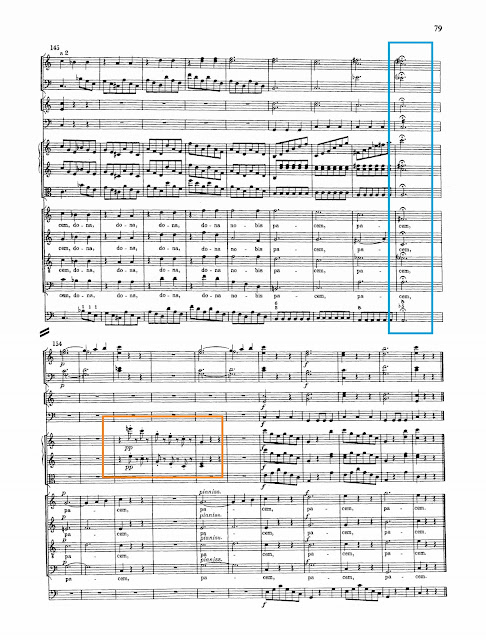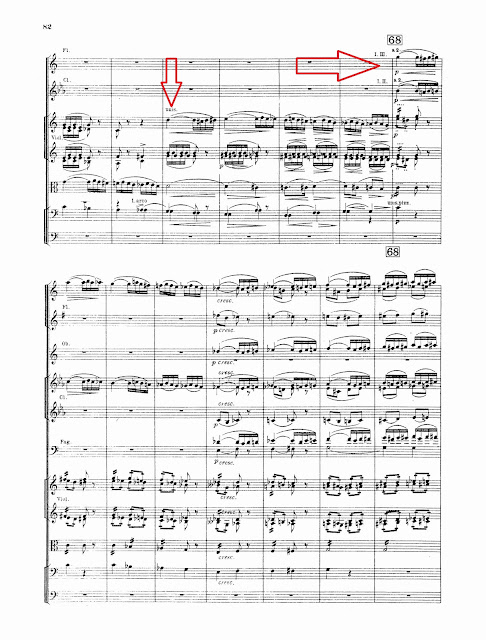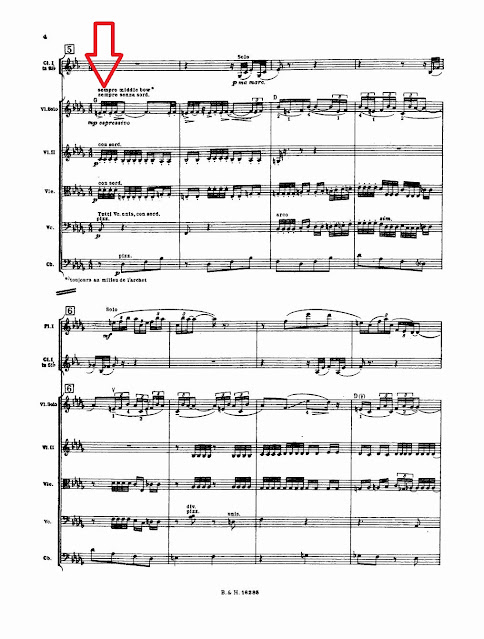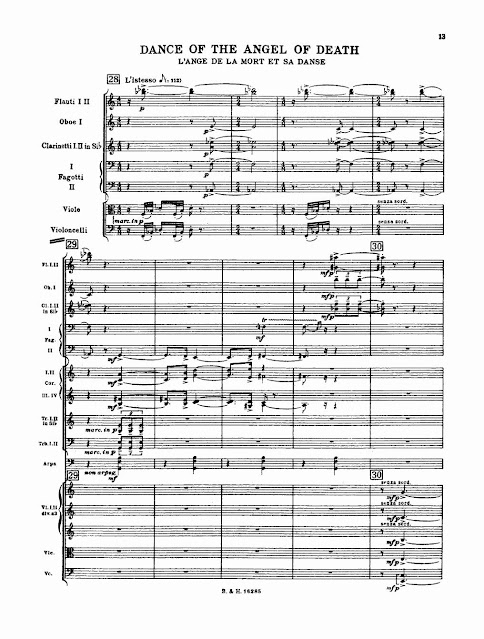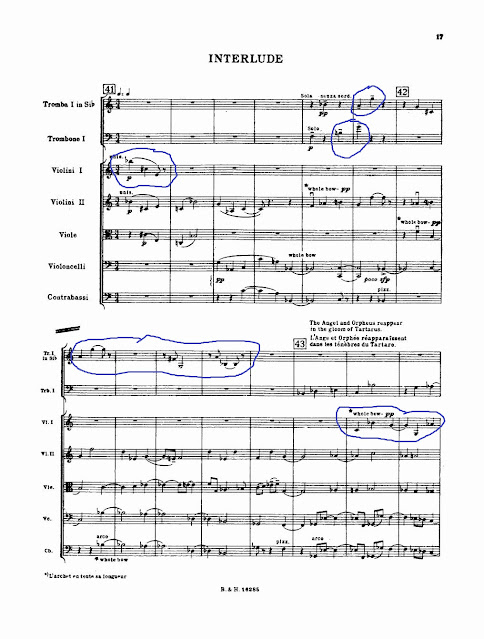CCCXXVII. GLAZUNOV, Alexander (1865-1936)
Symphony #8 in E-Flat Major, Op. 83 (1905)
1. Allegro moderato
2. Mesto
3. Allegro
4. Finale: Moderato sostenuto -- Allegro moderato
Moscow Radio Symphony Orchestra
Yevgeny Svetlanov, cond.
(42:40)
Conservative, even by the standards of 1905, this final symphony nevertheless is filled with beautiful melodies, sublime harmonies, and -- like most of the great Russians -- an uncanny knack for inventive orchestration ...
First Movement
A melody is introduced, first shared by bassoons and horns; clarinets and trumpets; and flutes and violins. This slightly syncopated tune permeates the entire movement; and in various disguises, the entire symphony!
A clever fugato in the parallel minor:
Second Movement
In E-Flat Minor (six flats), with a theme vaguely related to the first movement motif:
with such a distant tonality, Glazunov freely meanders around the circle of fifths -- darkening the mood here, lightening it there ...
Now and then, a glimpse of his influence on his pupil Shostakovich, who loved writing for solo instruments above pulsing strings, such as here:
Textbook orchestration; with the entire orchestra pounding away in short 1/8th-note phrases, he entrusts the melody in its lowest register to just bass clarinet, trombone, tuba and the lowest strings:
With the orchestration thinning out, three solo winds play in stretto, the movement ending with a gentle E-Flat Minor pulse ...
Third Movement
A four-bar chromatic motif establishes the musical material for most of the movement:
Fourth Movement
The winds carry a typical Russian hymn-like tune
as the original melody creeps back in. A clarinet introduces a contrasting motif in B Major:
a closer look at this bare brass blast:
Take a look at how Glazunov creates this with three trumpets, three trombones and tuba, rewritten in two clefs (the third trumpet is in F, sounding a Perfect Fourth above what's written):
and a mighty triumphant finish:













